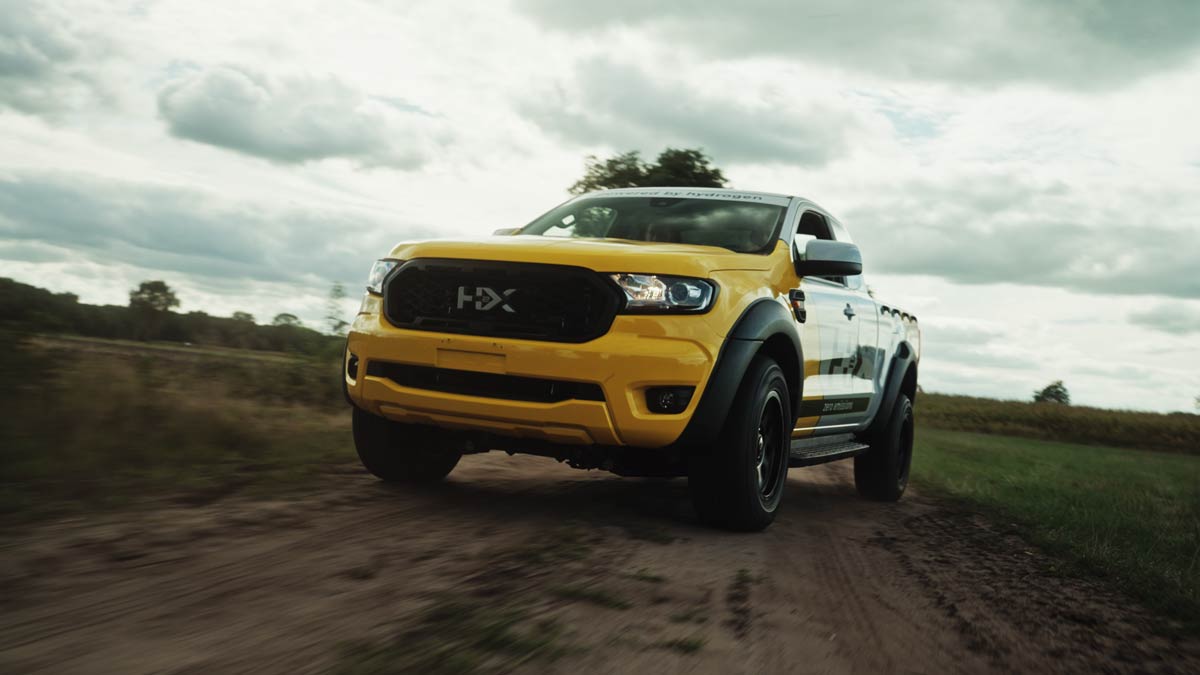
[ad_1]
About 100 kilometers from Amsterdam, in a workshop dedicated to the electrification of vehicles, there is one of two unique SUVs on hydrogen fuel cells – Warrego electric vehicles from the Australian company H2X Global.
The company simultaneously converted two such Ford Ranger-based vehicles, one here in Holland and the other at its factory in Sale, Victoria, to fit them with the company’s hydrogen fuel cell powertrains.
H2X Global CEO Brendan Norman met me in Amsterdam, where I’ve been working for a while for a change, and took me to see and drive the Warrego.
Proof of concept
First announced in 2020, Norman explained that the Warrego is a proof-of-concept car for H2X – the 250 will be built and delivered to customers for testing and gathering information on powertrain performance.
Hydrogen is stored in composite tanks before being fed into the H2X fuel cell, which charges a supercapacitor that powers an electric motor that powers all four wheels.
The first observation is that the system looks very well put together, thanks in no small part to the highly skilled partners Norman has worked with to bring the project from concept to near-commercial readiness.
The car drives in much the same way as a battery electric car – storing and releasing energy from the supercapacitor rather than the batteries doesn’t seem to matter.
Silent when running, some strange mechanical noises become apparent – noises that are masked by the engine noise of a combustion engine car.
Acceleration is quick and the car is agile, just like the original Ranger.
Justify the hype
Saeed Norman said: “H2X is committed to developing and delivering the best zero-emission hydrogen powered commercial vehicles, built by professionals for professional drivers.”
In no small measure, the Warrego lives up to that promise.
H2X Global is involved in hydrogen bus projects in Malaysia and Sweden, among other places.
But its real goal, with Warrego as a technology proof-of-concept, is to develop a hydrogen-powered van – the H2X Darling (all of the company’s vehicles will be named after Australian rivers).
After testing global markets for hydrogen-powered cars, Norman chose a van and expects the Darling to be launched in 2024.
At H2X Global, Norman created a lean business structure with just 50 employees, with many tasks outsourced to partners and suppliers.
A viable car on fuel cells
But in two short years, he has created a viable hydrogen fuel cell drive and vehicle that is now being tested in operation.
His next goal remains to manufacture the one-of-a-kind Darling – drivetrain, body and all – in Australia.
It is at a stage where governments of enlightened countries are courting its investment in their own countries – now is the time for state and federal governments to support this effort to revive car manufacturing in Australia.
This time with H2X, instead of an offshoot of some multinational company, we could have a home company with our own car that matches the market opportunity.
This is a goal we can all applaud and support.
This article was originally published by the Australian Manufacturing Forum. Reproduced here with permission. To read the original article, click here.
[ad_2]
Source link
